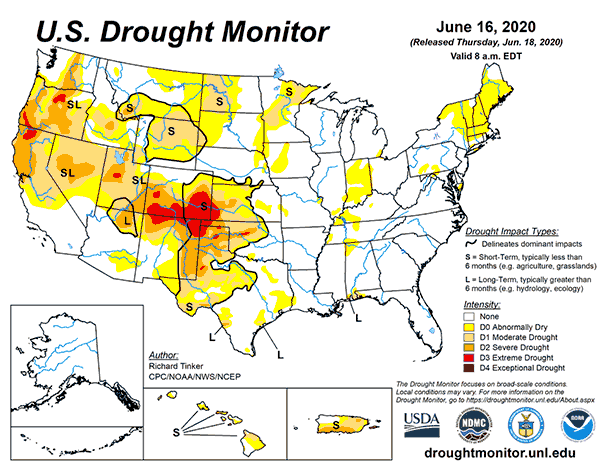10% of Contiguous U.S. Experiencing Exceptional Drought, Highest Since 2011
AgDay 06/15/21 Exceptional Drought
The latest U.S. Drought Monitor shows nearly 10% of the contiguous U.S. is now under an "exceptional drought," which is the highest the rate has been since 2011.
Right now, California, Oregon, Utah and Nevada are entirely under drought conditions, as a look at how the drought has changed over the past year shows just how intense the drought has become in the West. And with a dome of heat hanging over much of the country this week, it could make drought matters worse.

Monday's Crop Progress Report from USDA showed soil moisture conditions continue to decline. Just over half of the country soil's are considered to have "adequate" soil moisture, while 38% of the country is experiencing soil moisture conditions in the "short to very short" categories.
The Cost of Drought
As surface water disappears, one California water district says it's causing the prices to soar for the limited water resources left.
"Because the entire state, or almost all of the state is in an exceptional drought, everyone is trying to buy surplus or emergency water, what's left on the market, but it's bidding the price up-and-up," says Gary Kremen, vice chair of the Valley Water Board of Directors.
It's not just the West Coast dealing with a lack of rain, the entire upper Midwest is also dealign with dryness, which is sparking concern for Wisconsin farmers.
"We do water it, but it evaporates and dries up right away that's one of the challenges we've been having," says Shawn Fideler, of Fideler Farm in southeast Wisconsin, who grows fresh produce such as berries and vegetables.
Wildfire Worries
The dryness is also creating more concerns for a very active wildfire season. California has already seen a 26% increase in wildfire activity. This year has already produced a 58% increase in acres burned compared to last year, and last year ended up being the worst wildfire season in history for California.







